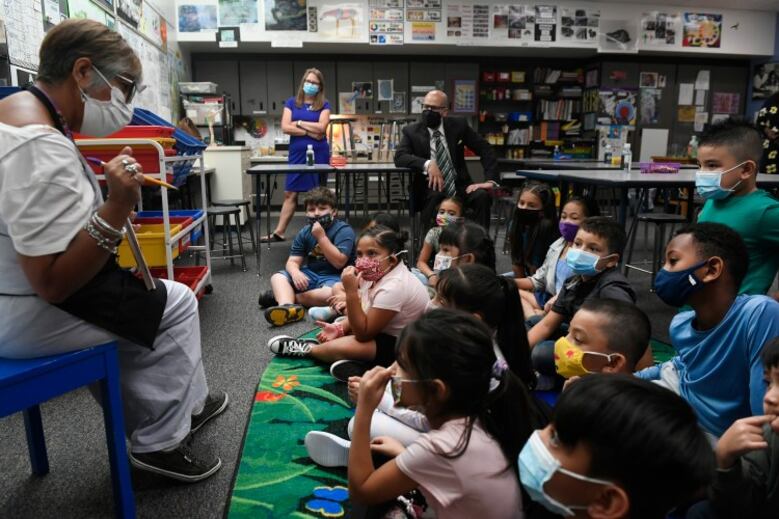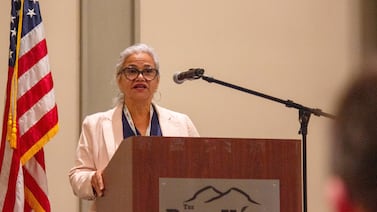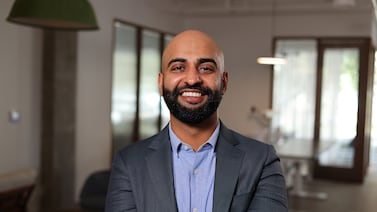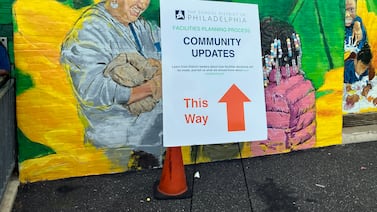“Enough is enough.”
That was the message from the Denver teachers union to the superintendent in a letter Thursday that called for a weeklong districtwide switch to remote learning to allow students and staff exposed to COVID-19 time to isolate and get tested, and if they’re positive, to recover.
But Superintendent Alex Marrero is holding fast to his commitment to keep schools open for in-person learning despite staffing shortages.
Union President Rob Gould said teachers don’t want to close schools either, but “when you have so many staff out, it seems like they’re piecemealing together solutions.” The Denver Classroom Teachers Association’s demand for virtual learning wasn’t as vehement as those in other parts of the country like Chicago, where schools have been closed all week because teachers refuse to report to work.
In its letter, the Denver union said that if a districtwide switch to remote learning isn’t possible, it is requesting a host of other safety measures, including:
- Clear thresholds for when individual schools can switch to remote learning based on the percentage of staff who are out sick.
- The ability of principals to make remote learning decisions “without unrealistic manipulation from central office administrators.”
- Mandatory deployment of central office staff to schools to backfill staff absences.
- Provision of KN95 masks for all students and staff.
- Rapid antigen testing for sick students and teachers before they return to school.
Denver Public Schools has already put some of the measures in place. On Thursday, Marrero said KN95 masks are available to all staff and students who want them, though some teachers reported shortages at their schools. On Friday, he announced that all central office staff would be deployed to schools at least one day a week starting Thursday.
District data provided to Chalkbeat shows 348 teachers were out sick on Tuesday, the first day back to school after winter break. That’s about 7% of the district’s 4,700 teachers. On Wednesday, that number increased to 411 teachers, or about 9% of the teacher workforce.
But district spokesperson Scott Pribble said those numbers do not represent an uptick from the fall, even though the omicron variant has sent COVID case counts soaring this winter.
“The numbers are in line with our daily averages in the fall,” Pribble said.
Student attendance was about 80% Tuesday and 82% Wednesday, district data shows. That’s down 7% from the same time last year. Most Denver schools were open for in-person learning Tuesday, though the list of schools that had temporarily switched to partial or full remote learning grew throughout the week. As of Friday afternoon, it stood at 25 out of 206 schools.
The district was also missing roughly a third of its bus drivers, causing long delays and making it hard for students to get to school.
Other metro area districts are also struggling with staff shortages but most so far are keeping buildings open. The Adams 14 district, though, announced it will be remote the week of Jan. 10.
In Denver, Marrero has rejected the union’s call for a clear threshold for switching to remote learning, saying Thursday that the district will continue to evaluate requests on a case-by-case basis. A new policy put in place this fall gives him the ultimate say, though Pribble said the district has not turned down any requests by principals whose schools are having staffing shortages.
“It really depends on who is out,” Marrero said. “I’ve often been asked ‘what is the metric?’ and it’s hard to say because we have so many schools and they look different.”
At least one of Denver’s charter school networks, STRIVE Prep, has put in place a threshold: If less than 65% of a school’s staff is present, the school can temporarily switch to remote learning, said CEO Chris Gibbons. Four of STRIVE Prep’s 10 schools were remote the first week of January.
Nearly all Denver Public Schools staff are fully vaccinated, and Marrero said that while COVID transmission can happen anywhere, schools are “safe havens” for students.
“It’s a matter of making sure that we minimize tremendous risk for our educators and students, because it doesn’t seem that this is going away,” he said, emphasizing “tremendous.” He said no new variant “is going to stop us from what we do best, and that’s educating children.”
Alex Nelson, a fourth grade teacher at Bryant-Webster Dual Language School, said that while the number of staff absences this week may be similar to the fall, things feel different. Nelson said he knows more teachers than ever who have COVID. Seven of the nine grade levels at his school experienced quarantines because students came in sick, he said.
As in the fall, Nelson covered for his colleagues who were out sick. On Friday morning, he filled in for the school secretary. Three of the phone calls he answered were from families reporting that their child or another family member had tested positive.
“We’re in a crisis moment,” Nelson said. “I want to step up, everybody else wants to step up for each other, but it starts to wear. … The energy I pick up talking and checking in with colleagues is always like, ‘How bad is it going to get?’”
Gould, the union president, said he’s hearing the same from teachers across the city.
“The thing that stuck with me from the educators I spoke with the last two days is yes, this is a surge that’s happening right now, but this is on top of the last semester,” he said. “This is cumulative trauma that’s been put on our educators over time.”
Heather Abreu, who teaches visual arts at Colfax Elementary, was home sick with COVID when Denver schools reopened after winter break. When the district changed its policy to allow sick staff to return after only five days of isolation rather than the previous 10 days, she got a call from her principal asking, “Does this change your situation?”
The answer was no. She actually felt sicker on the fifth day than earlier in the course of her illness. She was relieved her school found a substitute to cover her entire absence.
Abreu said the challenge right now is not just a highly transmissible variant of COVID, but the cumulative impact of the last two years. Like many teachers, Abreu is also a parent juggling her own children’s disrupted schooling alongside family challenges. She compared teachers’ capacity to that of an overloaded circuit.
“You can plug in so many things and run so many things until something blows,” she said.
Erica Meltzer contributed to this report.






